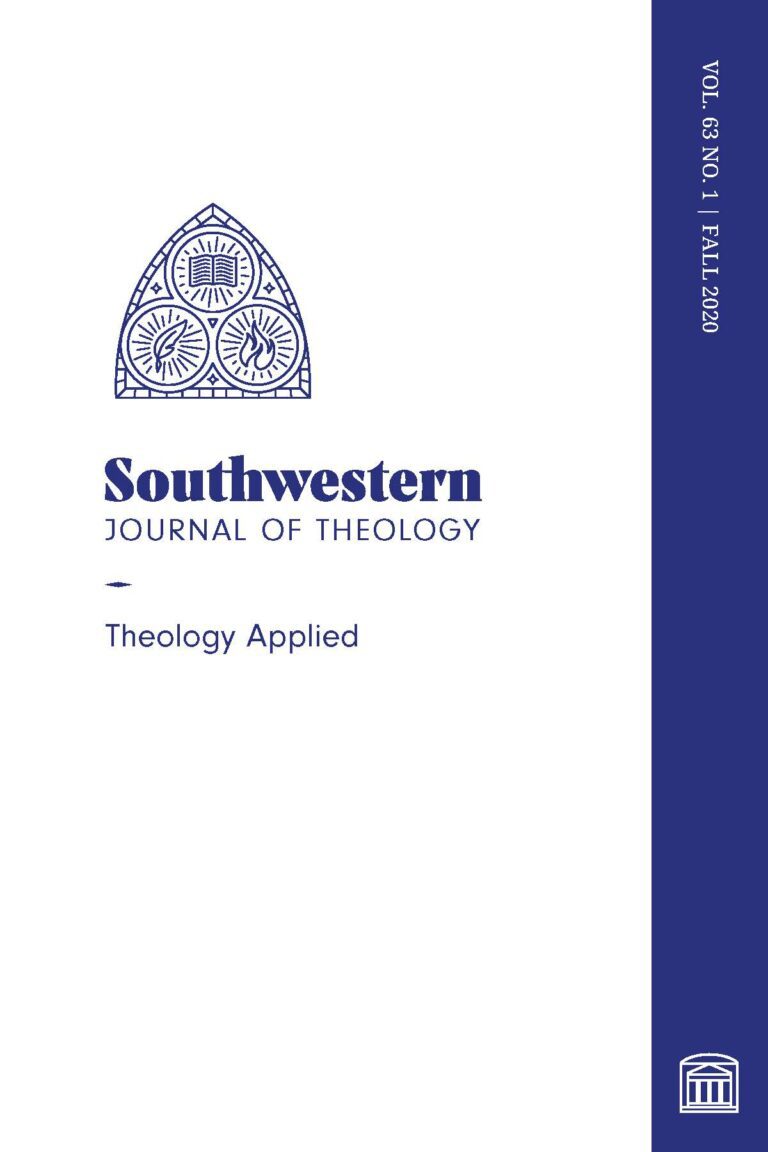
Theology Applied
Southwestern Journal of Theology
Volume 63, No. 1 – Fall 2020
Editor: David S. Dockery
Edited by Uriah Y. Kim and Seung Ai Yang. New York: T&T Clark, 2019, 544pp., $176
This volume is a collection of articles from a wide range of Asian voices in their American contexts among Filipino, Vietnamese, Japanese, Indian, Korean, and Chinese populations. The biblical scholars represented here voice their views that have been shaped by their sociocultural contexts. The articles are divided into three sections—contexts, methods, and texts—the parts that play a role in the process of interpretation. Altogether, thirty-seven biblical scholars of Asian descent have taken part to produce this collection of essays that bring to light the way Asian Americans have understood biblical hermeneutics.
The first section of seven articles on contexts starts with Tamara Ho’s discussion on the complex heterogeneity of the Asian American identity with a religious experience shaped by the numerous world religions which are found in Asian countries. Russell Jeung’s article looks at Chinese Americans, their history of immigration, and their “dizzying array of beliefs and traditions” that formed through their differences in income, generation, and familial roots. Lester Ruiz portrays the Filipinos in their multiculturalism in the aftermath of colonialism as they worked through estrangement and hospitality, which are also found in the biblical tradition. Jaisy Joseph and Khyati Joshi examine how Indians have stepped into an interreligious consciousness for interfaith dialogue among the various religious groups in the Indian community. Mai-Anh Le Tran speaks of the turbulent times in Vietnamese history and how their life in America has afforded greater freedom and much religious hybridization. Jung Ha Kim gives an account of Korean American hermeneutics with an overview of the prevalent Korean Christian church culture in the United States. Joanne Doi provides a glimpse into the Japanese mindset that moved from its horrific past of unjust wartime incarceration toward solidarity and remembrance in the present moment: just as wounds remain on the risen body of Christ, the Japanese hold to their past and look ahead toward reconciliation and progress. These experiences of Asians in America situate the reading of the biblical text from their challenges and struggles toward a redemptive future found in the shared Christian hope.
The next section on methods offers some needed reflection on the current methods of interpretation. Here, traditional approaches like historical criticism (Mary Foskett), social criticism (D. N. Premnath), literary criticism (Jin Young Choi), and theological reflection (Bo Lim) are brought into light in connection with the various Asian American experiences. Other non-traditional approaches are also included in the survey. Each of these articles demonstrates an understanding of the field by tracing the history of these methods while also combining the Asian American experience and the effects it has had on the discipline. Theological wisdom is needed to navigate one’s path through these discussions.
The third and final section on texts is the largest constituent of the volume. The twenty-two articles provide insights through the Asian American lens. The general pattern of exegesis is generally in the following steps: observations of the text, an account of the traditional readings of the text, and the perspective of the text through the contributor’s history and personal experience. Some memorable, meaningful, and creative connections are presented in this section. For example, the exile of Cain and God’s continued protection in Genesis are compared to the flourishing of Asian immigrants with opportunities in the new land (Hemchand Gossai). Zelophehad’s daughters in Numbers 27 and 36 uphold family honor as exemplary women in line with the filial piety of Confucianism (Sonia Wong). The book of Job undergirds the voice of the marginalized in the Chinese diaspora experience (Chloe Sun). Daniel in his Babylonian exile shows how Korean Americans face the challenges of cultural adaptation and assimilation (John Ahn). Jesus’s call to discipleship in Matthew strongly points to filial piety and radical discipleship among Chinese Christians (Diane Chen). The parable of the great banquet in Luke 15 offers insight into the privileged status of certain South Asian immigrants, moving them toward greater empathy for the disadvantaged in society (Raj Nadella). Readers will need to exercise careful discernment as they work through these articles.
The final product of this volume is a considerable achievement in bringing together the minority voices of biblical studies as their stories and struggles are heard along with their interpretation. The people, their approach, and their interpretation of the biblical text pull together a rich chorus of witnesses that gives the biblical texts significance in their respective Asian, yet still American, contexts. With the theological spectrum being so wide among the contributors, the handbook does not suggest that there exists any collective uniformity among them nor does it show that Asians conform to any singular dogma or tradition, but the collection does allow for these different voices of different backgrounds to be heard and appreciated. Any reader of biblical texts will naturally bring their background and training to their understanding of the biblical text. Missiologists have long identified the contextualized reception of Jesus’s message throughout church history. While this handbook has done a great service to show that the biblical text and its redemptive story have affected Asian Americans in ways profoundly contextualized in their cultural space and varying ecclesial traditions, it must also be noted that some of the contributions found in this volume fall outside the consensus of Christian orthodoxy.





